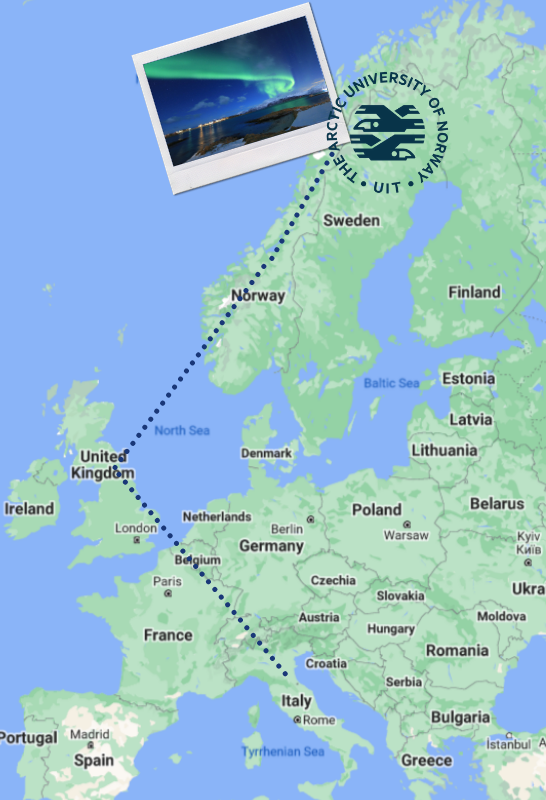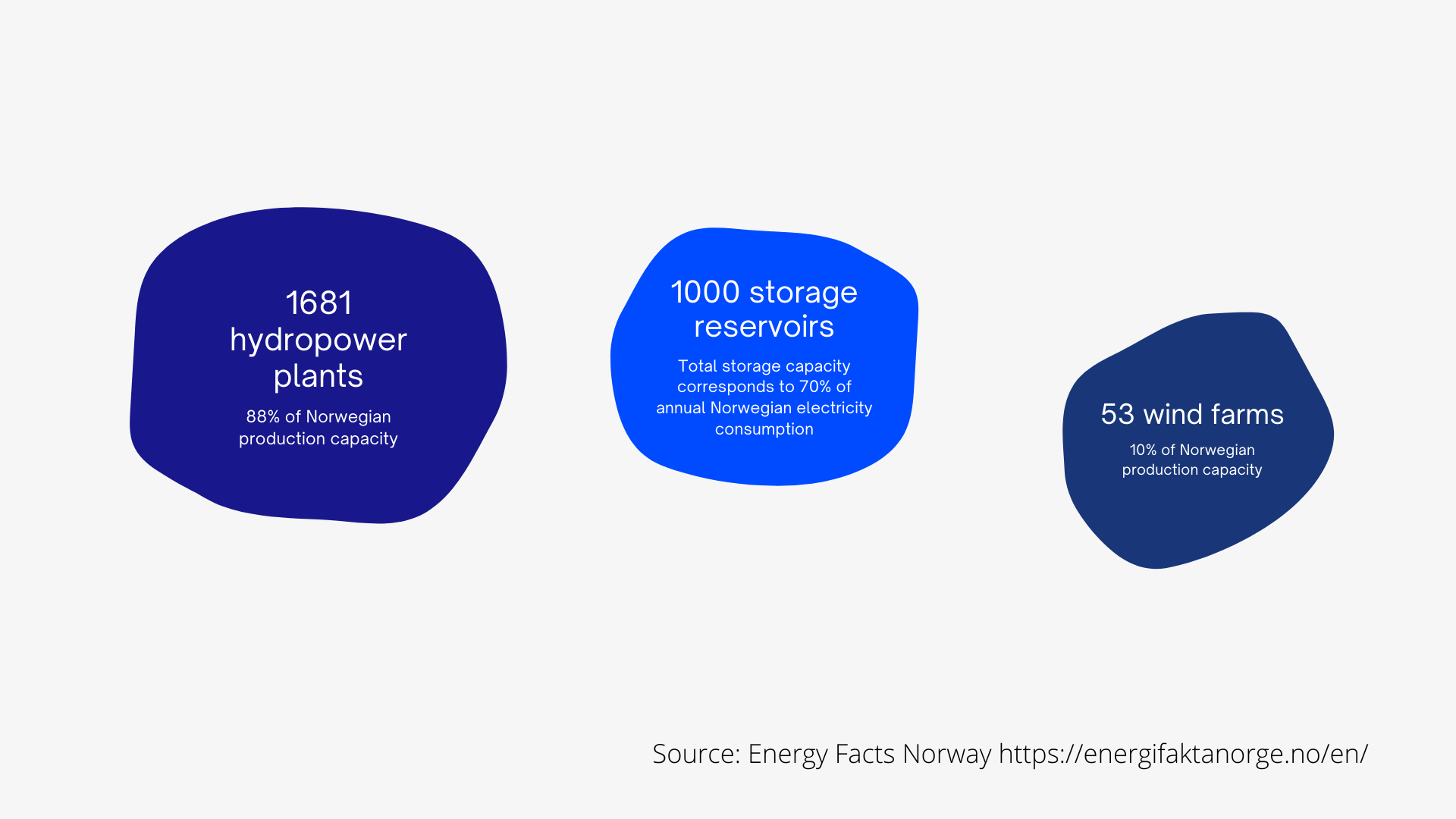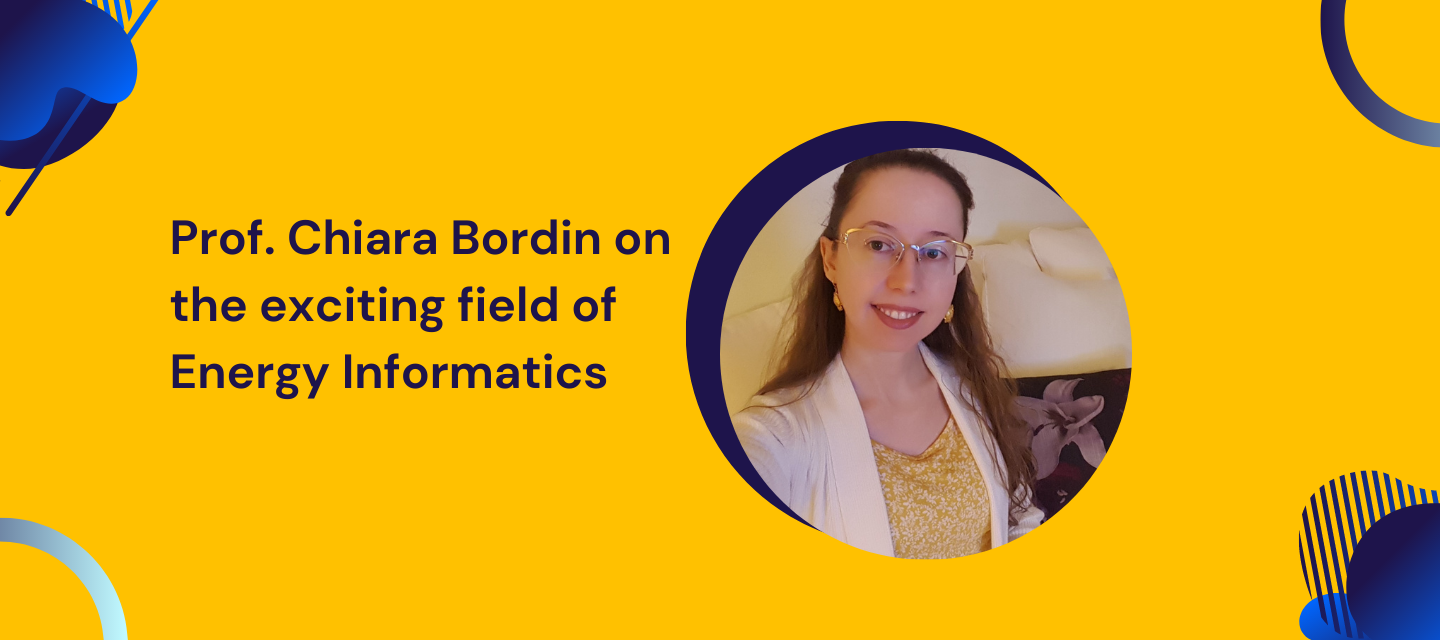AIMMS has long been in the toolbox of energy modelers. With the field undergoing a lot of change today, we were curious to hear from someone who is at the forefront of both energy modeling and one of the biggest challenges of our time: a transition to low-carbon energy systems. We had the pleasure of speaking with Chiara Bordin, Associate Professor of Energy Informatics at UiT, the Arctic University of Norway.
Can you tell us a bit about yourself and your background?
I am originally from a small town near Bologna, Italy. I did my master’s degree at the University of Bologna, as well as my PhD. In the last year of my PhD, I had the opportunity to spend some time as a visiting researcher in a foreign university and I decided to go to Durham University, in the UK. There was a lecturer there who was doing very interesting things in energy systems modeling. I felt that working with him would be a good experience, so I went there as a visiting student. I ended up staying there for the full year. The project I was working on was going well. I finished my PhD and got a position as research associate in the same department at Durham University.
At the time, I thought I could have settled in the UK. I was very happy, but I was also willing to experience what it was like to work in an industrial setting and do research in that area. Through some conferences and summer schools, I got to know SINTEF Energy in Norway, which is an institute that does applied research. They are the largest research center in Scandinavia. I applied there and got in touch with a professor at the Norwegian University of Science and Technology, which is in Trondheim as well. They had an open post-doc position. So, I applied there too and basically got accepted at both. I stayed in Trondheim for four years, initially as a postdoc at NTNU, and afterwards as a full-time research scientist in SINTEF Energy.
Working in both an academic and industrial setting made me realize that academia would be more fulfilling for me. That’s when I decided to look for an associate professor position, full time. An interesting position in Energy Informatics opened at the Arctic University of Norway. I gave it a try, and this is how I ended up in Tromsø.

So, in a way, your research interests brought you to the Arctic by chance.
Yes, it wasn’t at all planned. I ended up traveling north bit by bit. There is that song that says, “life is what happens to you while you're busy making other plans” (Lennon). And indeed, while following my curiosity, my research interests and passions, I ended up as associate professor in Tromsø.
When did you first develop an interest in energy modeling?
It was during my master’s in industrial engineering and management. The program had a special curriculum in energy topics and several courses in operations research and mathematical optimization. That’s where I developed my interest in energy and OR. I went on to do my PhD in Operations Research, focusing on applying mathematical optimization in thermal and electrical energy systems.
When did you first hear about AIMMS?
I heard about AIMMS during my time at Durham as a PhD student. My supervisor introduced me to AIMMS and through him, I started getting to know this amazing tool for optimization.
Can you tell me a bit more about energy informatics, the field you specialize in now?
Energy Informatics is an emerging, interdisciplinary domain that lies at the intersection of energy systems, power systems, economics, computer engineering, and computer science. My background in optimization, applied to power and energy systems, fits well with the interdisciplinary aspects of this field. I was fascinated by the opportunity to work in this novel domain and develop a new master-level course in this field. After a year in this position at the Arctic University, I can definitely say that I am very happy. The department supports me and my career a lot. I am privileged to be fulfilled and happy in my work.
That’s great to hear. What goes into your everyday work when you graduate with an energy informatics degree?
The field is all about how you can use different computer science techniques to solve energy-related problems. It’s not only about being a power systems engineer or a computer scientist. It’s about understanding the key subjects in these two fields and putting them together. My particular interest lies in mathematical models, but you can also specialize in big energy data, using machine learning for predictions, cyber-physical systems, internet of things... all of these subjects have a role to address energy topics today. There is also a sociological aspect, which is understanding human behavior revolving around the use of energy. And we cannot forget economics. When you work in energy, you have to do a lot of profit maximization or cost minimization.
This brings me to my next question. Planning and optimizing an energy system is a complex task and getting it “wrong” can have many economic, political and social consequences. Can you talk about the most common challenges for energy modeling today?
Like George Box once said, “all models are wrong, but some are useful.” In this field, we cannot address everything with a single model. You have too many variables and computational times that can become too high. So, in short, you need a specific model for different needs. That’s why you see a lot of new models being developed in literature all the time.
There is also an interesting trade-off between technology-agnostic and technology-oriented modeling. Technology-agnostic models are generally high-level, for investment decision-making. The technologies behind these models tend to have a very basic representation of operational details. Technology-oriented models make an effort to include certain technological details that can make a difference within the decision-making process. They take a more in-depth view into operational issues and usually look at smaller instances of the overall system. So, it’s important, when developing our model, to have a good balance between the technological details and the size of the problem. This is an interesting area of research in itself: understanding to what extent certain technological details should be considered as modeling features, in which scenarios, and why.
Like in many other industries, data quality is a challenge. The result of the model depends on the quality of the data that you feed it. There’s a challenge of predictions, and scenario development on both a short and long term. For example, when we talk about the energy transition to a low-carbon energy system and we focus on how the energy system will look like in 30-50 years, you have to look at how demand will change, how investment practices will change, how technological improvements will look like etc. All of this requires the development of scenarios at a qualitative level, which is quite a challenging task.
Finally, I think we have an integration challenge. As I mentioned, we cannot address everything with a single model. So, our research community is constantly developing new models, focusing on different aspects of the problems. The challenge is how can we link or integrate existing models to improve our analyses? Researchers develop lots of self-contained models focused on specific sectors. How can we make better use of these tools and link/integrate them together?
That’s a very interesting point. How do you think the community can address this?
Research in energy is becoming more and more interdisciplinary. This means that the ability to cooperate with others is vital if we want to bring the research further. Beyond interdisciplinarity, as I was mentioning before, the need to understand, integrate and link different tools requires cooperation at different levels. Cooperation brings many opportunities, but also challenges, since it is based on trust. It requires honesty, ethics, and kindness. It also requires a good portion of humbleness, as well as the ability and availability to learn from others. It is important to always select your collaborators wisely based on these aspects and define expectations and responsibilities upfront. When a colleague contributes to part of your work (with funds, ideas development, conceptualization, or any other task however small it could be), he/she should always be given a fair opportunity to further contribute and be part of the scientific output in terms of publications. This means promoting a virtuous culture of healthy cooperation and not a destructive culture of competition. Inclusion and healthy cooperation are more powerful than exclusion and competition, since they build bridges, they strengthen relations, they nurture a serene working environment, and they create new opportunities.
It sounds like cooperation is key for the future of the field. I’d also like to talk about your research location. What can you tell us about the energy context in Norway?
Yes, Norway has the highest share of electricity produced from renewable sources in Europe, and the lowest emissions from the power sector. If you’re interested in some 2021 numbers, Norway has:

These are all sourced from this website if you’re interested in reading more.
So as you can see, hydropower is the main resource in Norway. Wind is also a significant resource.
I understand integrating wind energy in power systems modeling presents interesting challenges, since the power output is hard to predict. Can you talk about that?
Indeed, when it comes to wind, the most interesting challenge is predicting wind production. Machine learning approaches are being constantly developed and tested to improve the prediction tasks for wind power generation. If you can properly generate wind related datasets, you can then utilize them within mathematical optimization models to address a wide spectrum of optimal investment decision making and operational management problems. You also see the combination of machine learning and optimization - where machine learning is generating the forecast dataset, and optimization is utilizing this dataset to perform optimal decisions.
I’ve written a paper on machine learning for wind power predictions, with three colleagues. We conducted a performance comparison of five deep learning models, each combined with three types of data pre-processing. The goal was to assess the effectiveness of these models for wind power prediction and offer a reference point to better understand which model to choose and what factors are significant.
You’ve also worked on solar energy integration. In fact, you used AIMMS in one of your papers on battery degradation. Can you tell us about that?
Yes, the inclusion of technical details, and specifically degradation, is a very interesting challenge here. As I mentioned earlier, most of the models are technology agnostic. They consider the storage as a black box where you can put energy, withdraw energy, and utilize it as much as you want. But this is not the case because the way you use the battery affects its degradation processes and lifetime. This, in turn, has an impact on the value of the storage.
The paper looks at different ways to model this degradation processes for optimization purposes. By taking the degradation issues into account, the value of the investment and the value of the battery itself changes a lot.
How else have you used AIMMS in your research?
I have used it as an academic to build some models and prototypes, and I also use it to train students in a research environment.
Besides the paper on battery degradation mentioned above, I have used AIMMS for modeling purposes in the following papers:
- Bordin, C., Mishra, S., & Palu, I. (2021). A multihorizon approach for the reliability oriented network restructuring problem, considering learning effects, construction time, and cables maintenance costs. Renewable Energy, 168, 878-895.
- Bordin, C., & Tomasgard, A. (2019). Smacs model, a stochastic multihorizon approach for charging sites management, operations, design, and expansion under limited capacity conditions. Journal of Energy Storage, 26, 100824.
- Mishra, S., Bordin, C., Tomasgard, A., & Palu, I. (2019). A multi-agent system approach for optimal microgrid expansion planning under uncertainty. International Journal of Electrical Power & Energy Systems, 109, 696-709.
- Ibrahim, A. A., Kazemtabrizi, B., Bordin, C., Dent, C. J., McTigue, J. D., & White, A. J. (2017, June). Pumped thermal electricity storage for active distribution network applications. In 2017 IEEE Manchester PowerTech (pp. 1-6). IEEE.
What do you like most about using AIMMS?
It is a very structured tool with many useful features. What really makes it stand out among other tools, is that it allows you to easily create interfaces to analyze the results after optimization. You can create tables and diagrams, easily upload a dataset, and investigate the results (why you are getting certain outputs and such). It is very user friendly and suitable for those who are not very much into programming or new to optimization. With other tools, you would have to write lots of lines of code to get a plot or a diagram. As a professor, it allows you to spread the subject of optimization to a wider variety of students and users. It makes modeling easy to approach and fun!
AIMMS’ online support is great too. You can really learn a lot by looking at the community and what other people are working on. Most of the time, if you do a simple search, you can already find answers to your questions.
That’s great to hear! I’m curious what you would advise students who want to pursue a career in the field of operations research, besides using AIMMS of course 
I would say, consider knowledge a responsibility. Don’t be content with just getting an education or a diploma, but always try to delve deeper into subjects to broaden your knowledge and improve your skills. Research is easily accessible online, and the field moves fast so keeping your skills up-to-date is important.
I would suggest looking for a field of application that is interesting and motivating. In my case, I found my path within energy and power systems, but there are others. Operations research can be applied to many areas.
Pursue values like respect, integrity, and honesty to generate and keep a positive working environment. Don’t be driven only by money. Enjoyment and fulfillment are important too. Acknowledge the work and contribution of your peers and always give your colleagues a fair opportunity to contribute to your work. As I mentioned earlier, don’t promote a culture of exclusion, promote inclusion. That would be my advice.
Thank you for sharing that. What are your future research plans?
I want to increase the interdisciplinary aspects of my research and expand it within the domain of energy informatics. I would like to further explore the interconnections between smart energy, power systems modeling and other computer science disciplines. For instance, machine learning, database systems, cyber physical systems, data mining, big energy data, green computing, parallel and distributed computing... there’s a lot to learn.
Here’s my latest paper, which I published with two colleagues and where I discuss the key role of mathematical modeling and its connections with other computer science subjects, within the Energy Informatics domain:
Bordin, C., Håkansson, A., & Mishra, S. (2020). Smart Energy and power systems modelling: an IoT and Cyber-Physical Systems perspective, in the context of Energy Informatics. Procedia Computer Science, 176, 2254-2263.


